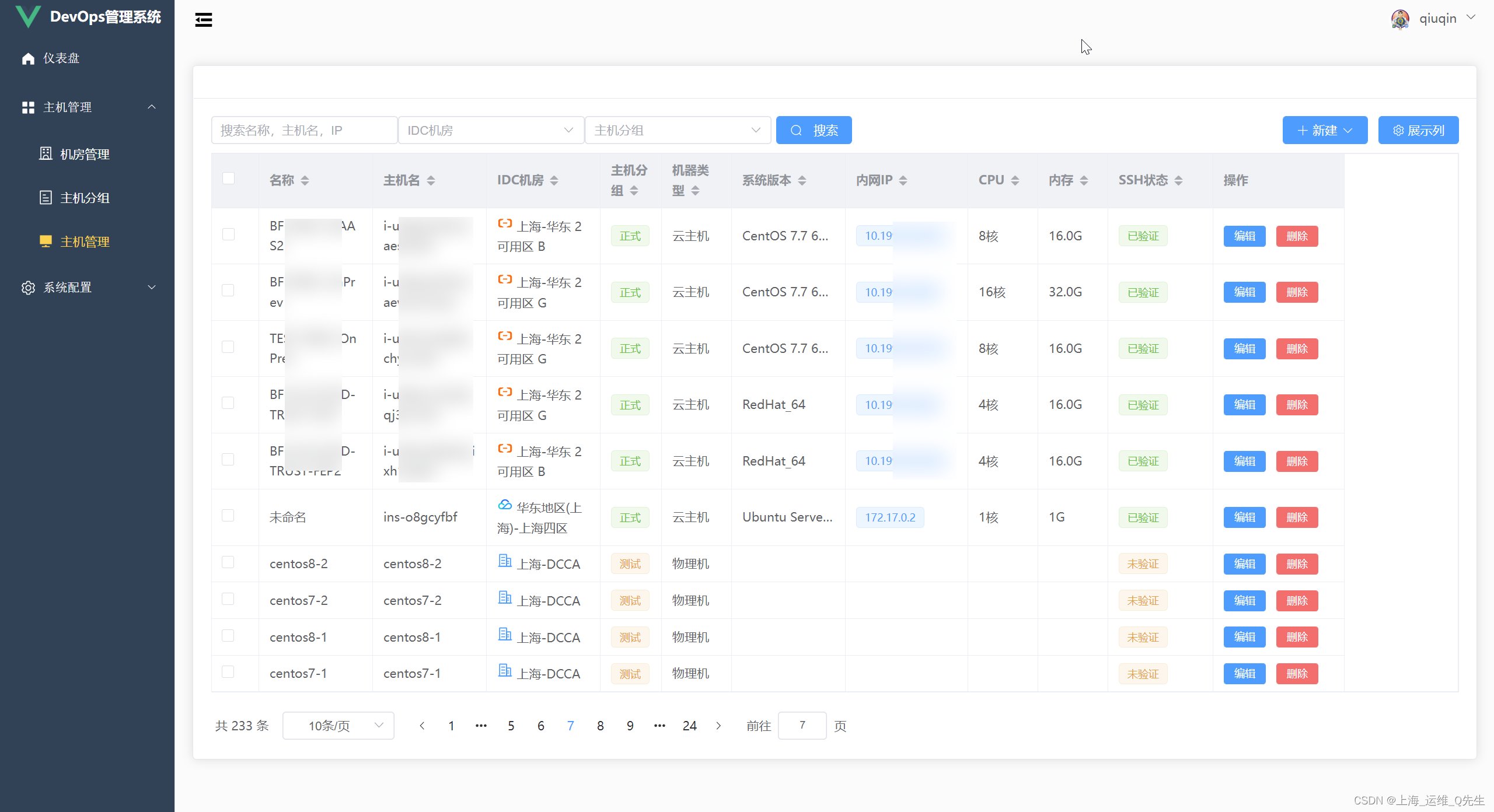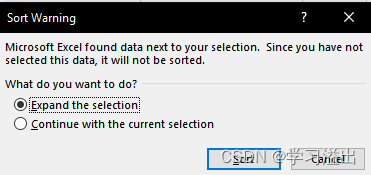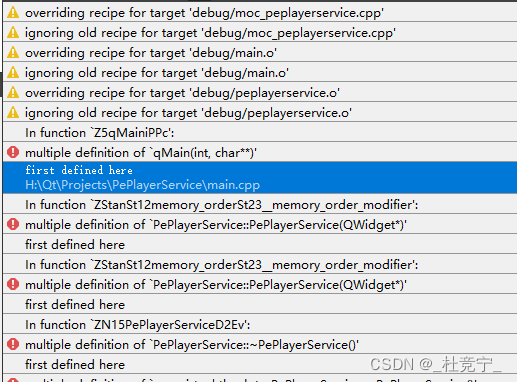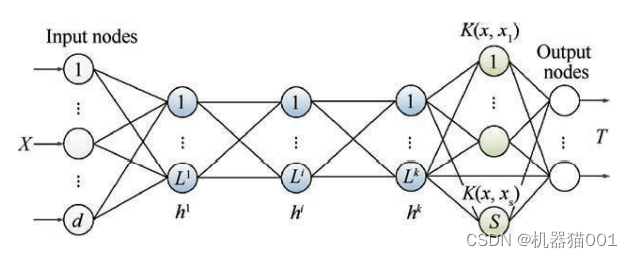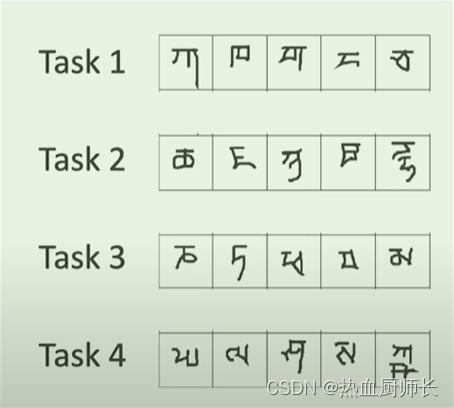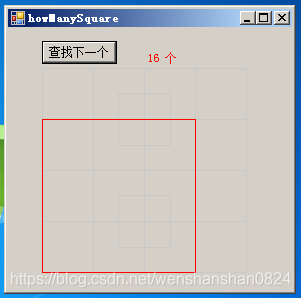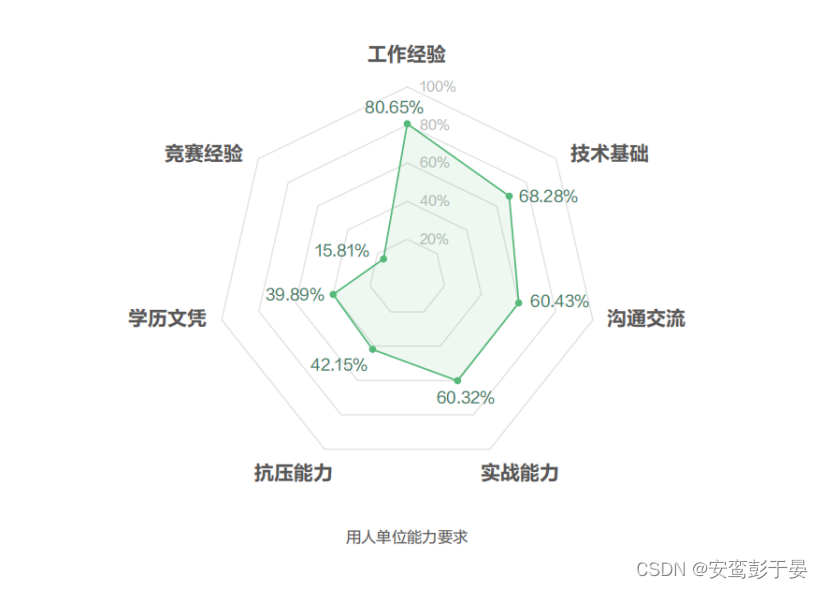当前位置:网站首页>Implementation of ICEEMDAN Decomposition Code in MATLAB
Implementation of ICEEMDAN Decomposition Code in MATLAB
2022-08-04 07:02:00 【Doraemon 001】
0, Preface
This article explains the ICEEMDAN decomposition method and shares the code.
1. Implementation of ICEEMDAN
The following is the main function part:
ecg=data;%data is a signal data to be decomposed, please replace it with your own data%% parameter settingsNstd = 0.2;nr = 1;MaxIter = 5000;%%ICEEMDAN[modes]=iceemdan(ecg,Nstd,NR,MaxIter,1);%iceemdanmodes=modes';t=1:length(ecg);[a b]=size(modes);figure;subplot(a+1,1,1);plot(t,ecg);% the ECG signal is in the first row of the subplotylabel('original')set(gca,'xtick',[])title('ICEEMDAN')axis tight;for i=2:asubplot(a+1,1,i);plot(t,modes(i-1,:));ylabel (['IMF ' num2str(i-1)]);set(gca,'xtick',[])xlim([1 length(ecg)])endsubplot(a+1,1,a+1)plot(t,modes(a,:))ylabel(['IMF ' num2str(a)])xlim([1 length(ecg)])xlabel('sample point')The code of the sub-function iceemdan:
function [modes]=iceemdan(x,Nstd,NR,MaxIter,SNRFlag)% The current is an improved version, introduced in:%[1] Colominas MA, Schlotthauer G, Torres ME. "Improve complete ensemble EMD: A suitable tool for biomedical signal processing"% Biomedical Signal Processing and Control vol. 14 pp. 19-29 (2014)%The CEEMDAN algorithm was first introduced at ICASSP 2011, Prague, Czech Republic%The authors will be thankful if the users of this code reference the work%where the algorithm was first presented:%[2] Torres ME, Colominas MA, Schlotthauer G, Flandrin P. "A Complete Ensemble Empirical Mode Decomposition with Adaptive Noise"% Proc. 36th Int. Conf. on Acoustics, Speech and Signa Processing ICASSP 2011 (May 22-27, Prague, Czech Republic)%Author: Marcelo A. Colominas%contact: [email protected]%Last version: 25 feb 2015desvio_x=std(x);x=x/desvio_x;[a,b]=size(x);temp=zeros(b,1);modes=zeros(b,1);aux=zeros(a,b);for i=1:NRwhite_noise{i}=randn(size(x));%creates the noise realizationsend;for i=1:NRmodes_white_noise{i}=emd(white_noise{i},'display',0);%calculates the modes of white gaussian noiseend;% save interval modes_white_noisefor i=1:NR %calculates the first modexi=x+Nstd*modes_white_noise{i}(:,1)'/std(modes_white_noise{i}(:,1));[temp, o, it]=emd(xi,'MaxNumIMF',1,'SiftMaxIterations',MaxIter,'display',0);aux=aux+(xi-temp')/NR;% nnnnnnnnnnnnnnnnJub local envelopeend;modes= (x-aux)'; %saves the first modemedias = aux; %r1k=1;aux=zeros(a,b);es_imf = min(size(emd(medias(1,:),'SiftMaxIterations',MaxIter,'display',0)));while es_imf>1 %calculates the rest of the modesfor i=1:NRtamanio=size(modes_white_noise{i});if tamanio(2)>=k+1noise=modes_white_noise{i}(:,k+1);if SNRFlag == 2noise=noise/std(noise); %adjust the std of the noiseend;noise=Nstd*noise;try[temp,o,it]=emd(medias(1,:)+std(medias(1,:))*noise','MaxNumIMF',1,'SiftMaxIterations',MaxIter,'display',0);catchtemp=emd(medias(1,:)+std(medias(1,:))*noise','MaxNumIMF',1,'SiftMaxIterations',MaxIter,'display',0);end;elsetry[temp, o, it]=emd(medias(1,:),'MaxNumIMF',1,'SiftMaxIterations',MaxIter,'display',0);catchtemp=emd(medias(1,:),'MaxNumIMF',1,'SiftMaxIterations',MaxIter,'display',0);end;end;aux=aux+(medias(1,:)+std(medias(1,:))*noise'-temp')/NR;% r2 r3 r...end;modes=[modes (medias(1,:)-aux)'];medias = aux;aux=zeros(size(x));k=k+1;es_imf = min(size(emd(medias(1,:),'SiftMaxIterations',MaxIter,'display',0)));end;modes = [modes (medias(1,:))'];modes=modes*desvio_x;The above code can be run directly to achieve signal decomposition.
边栏推荐
猜你喜欢
随机推荐
20170729
golang 坐标格式 转换 GCJ02ToWGS84
关于网络安全行业你知道多少?
基于Event Stream操作JSON
树莓派 4 B 拨动开关控制风扇 Rasberry Pi 4 B Add Toggle Switch for the Fan
沉浸式体验参加网络安全培训班,学习过程详细到底!
JUC并发容器——阻塞队列
Interpretation of EfficientNet: Composite scaling method of neural network (based on tf-Kersa reproduction code)
Memory Management
Scheduler (Long-term,Short-term, Medium-term Scheduler) & Dispatcher
Uos统信系统 DNS
MySQL之SQL结构化查询语言
桌面右键的NVIDIA去除与恢复
MySQL stored procedure study notes (based on 8.0)
Unity Day02
普通用户 远程桌面连接 服务器 Remote Desktop Service
对渗透测试工程师来说,学历重要嘛?
让src文件夹能读取xml文件
【HIT-SC-LAB1】哈工大2022软件构造 实验1
狗都能看懂的Pytorch MAML代码详解
